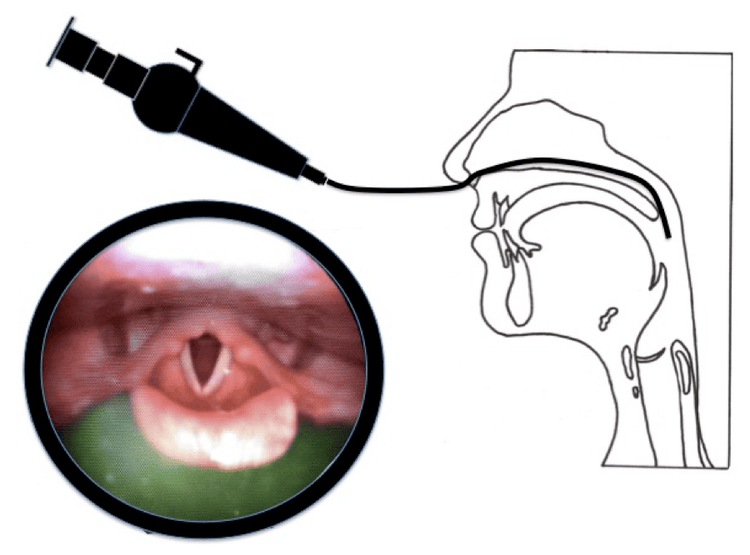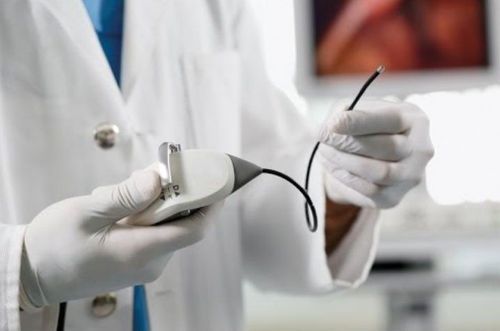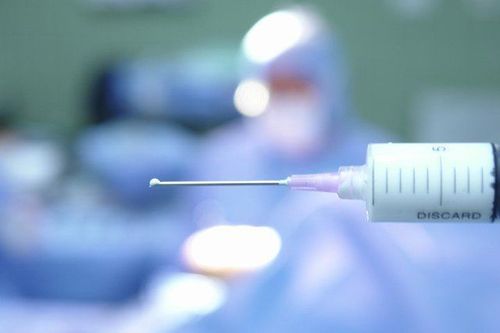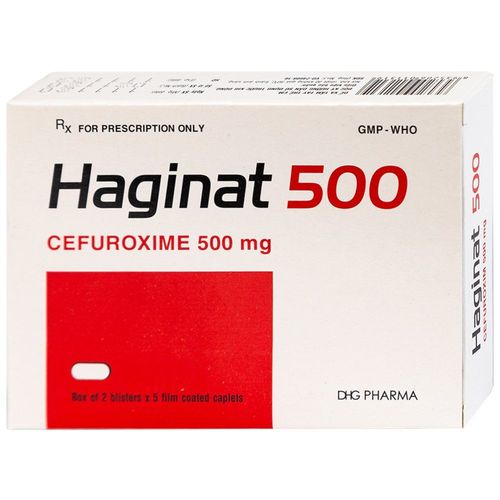This is an automatically translated article.
Otolaryngoscopy is a technique being widely applied, helping doctors diagnose many diseases in the ear, nose and throat organs accurately. The procedure is quite simple and very safe for the patient.1. What is otolaryngoscopy?
Otolaryngoscopy is a procedure to examine patients by using a specialized endoscope with cameras and specialized glasses at both ends, inserted into the nooks and crannies of the ear, nose and throat. From there, the doctor can directly and clearly observe the inside of these organs through the display screen. Otolaryngoscopy technique is indicated to be used to diagnose and detect common diseases of the ear, nose and throat such as crooked nasal septum, sinusitis, problems with nasal cavity structure, laryngeal tumor, otitis media, nasopharyngeal cancer, laryngeal cancer, tubal movement disorders causing tinnitus,... The advantage of this technique is that it helps doctors diagnose the disease accurately, offer interventions, timely treatment.SEE MORE: Steps of ENT endoscopy
Accordingly, when the patient has the following signs, the patient should go for otolaryngoscopy:
Frequent tinnitus, hearing loss, ear pain, itchy ears and ear discharge; There are signs of suspected sinusitis such as stuffy nose, runny nose, headache, frequent sneezing,...; Or nosebleeds, persistent hoarseness, or shortness of breath when speaking, inability to smell; Patients suspected of having nasopharyngeal cancer or tonsillitis, causing stuffiness on both sides of the nose, more stuffy nose when lying down, green nasal discharge, nasal voice, often snorting; People with persistent cough, coughing up blood, sore throat, hoarseness, bad breath, difficulty swallowing; People with defects in the ears, nose, throat, ...

Nội soi tai mũi họng cho phép đánh giá tổng quan về tình trạng tai mũi họng
2. Instructions for otolaryngoscopy
2.1 Preparation
Nursing team: Wear gloves and medical masks; disinfect the endoscope and then give it to the doctor; The team of doctors: Explain to the patient about the procedure; Wear medical gloves and masks.
2.2 Performing endoscopy
Ear endoscopy: The patient sits upright. The doctor will use the endoscope, bring it down in a straight position along the axis of the outer ear canal to observe the outer ear canal, tympanic membrane and hammer handle; Nasal endoscopy: The patient sits with the head tilted back at an angle of 15°; The doctor puts a piece of cotton wool soaked in vasoconstrictor and anesthetic into the patient's nose. After 5 minutes, the doctor removed the cotton swab and started the nasal endoscopy; The doctor uses a specialized endoscope, inserted into the nose in the direction from front to back, observing the structures in the nose; Where indicated, the doctor cleans the wound, cleans up blood, mucus and takes a biopsy; Throat-laryngoscopy: The patient maintains an upright sitting position, with both legs hanging straight. The doctor gently inserts the endoscope into the pharynx on the surface of the tongue in an outward-inward direction. The doctor will observe the surface of the tongue, uvula, 2 tonsils, isthmus, bilateral pear sinuses, the bottom of the tongue, the larynx, the cartilage of the funnel, the glottis and the vocal cords. During the procedure, the team of nurses and doctors carefully monitor the patient's condition. Finally, take pictures, save images and diagnostic results to the computer for easy monitoring of the disease.

Quy trình nội soi tai mũi họng
3. Is the ENT procedure painful?
Previously, ENT technique used hard endoscope, so it caused pain and discomfort to the patient when the endoscope tip touched the mucosa of the nose and throat. However, now medical facilities all use flexible endoscopes, so this situation has been overcome. In fact, the procedure of performing ENT technique takes very little time (about 5 - 10 minutes) and is painless for the patient. The doctor will examine and evaluate the patient's condition before deciding to perform endoscopy. In addition, the doctor may also use vasoconstrictor drugs, anesthetic or anesthetic before performing the endoscopy. Vasoconstrictors help widen the nasal structures, making it easier to see. The anesthetic makes the nasal mucosa feel numb, so the patient does not feel pain. Thereby, reducing discomfort for the patient. However, in a few cases, the patient may feel uncomfortable if the nasal cavity is narrow, the throat has many reflexes, the septum is crooked so it compresses the nasal slit,... This technique also has very few accidents. . A stroke occurs only if the patient (especially a young child) reacts by screaming, thrashing or unable to breathe due to fear, cyanosis, etc. Mild complications, possibly bleeding due to collision with endoscope body or perforated tympanic membrane (uncommon).SEE ALSO: Can babies have ENT endoscopy?

Thủ thuật nội soi tai mũi họng thường không gây đau đớn do có sử dụng thuốc gây tê
4. Note to patients when assigned to perform otolaryngoscopy
Some notes when performing otolaryngoscopy are as follows:Talk carefully with your doctor about your health condition before the endoscopy, especially if you need to use anesthetic or anesthetic; Tell your doctor about any medications you are taking, especially aspirin or blood thinners; Family members are required to take them home after the procedure, especially after anesthesia; Strictly follow the detailed instructions of medical staff; Keep calm, comfortable when going to endoscopy, avoid anxiety and stress; Go to the hospital if there are abnormal symptoms after ENT endoscopy such as nausea, dizziness, persistent runny nose,... The ENT method helps doctors easily detect some diseases. in these organs, from which there are safe and effective interventions and treatments. Patients should keep their mind at ease during endoscopy so that the procedure goes smoothly and gives the best results.
Vinmec International General Hospital is a general hospital that has the function of examining and treating ENT diseases such as sinusitis, rhinitis, allergic rhinitis, chronic rhinitis, tonsillitis, and pain. throat, tinnitus and many other diseases. At Vinmec, we have also performed endoscopic diagnosis and treatment with modern medical methods for ear, nose and throat diseases, which not only brings high efficiency but also minimizes complications of recurrent disease. The great success is because Vinmec is always fully equipped with modern facilities, examination and treatment procedures are carried out by a team of experienced and qualified doctors that will bring about treatment results. optimal for customers.
Please dial HOTLINE for more information or register for an appointment HERE. Download MyVinmec app to make appointments faster and to manage your bookings easily.













